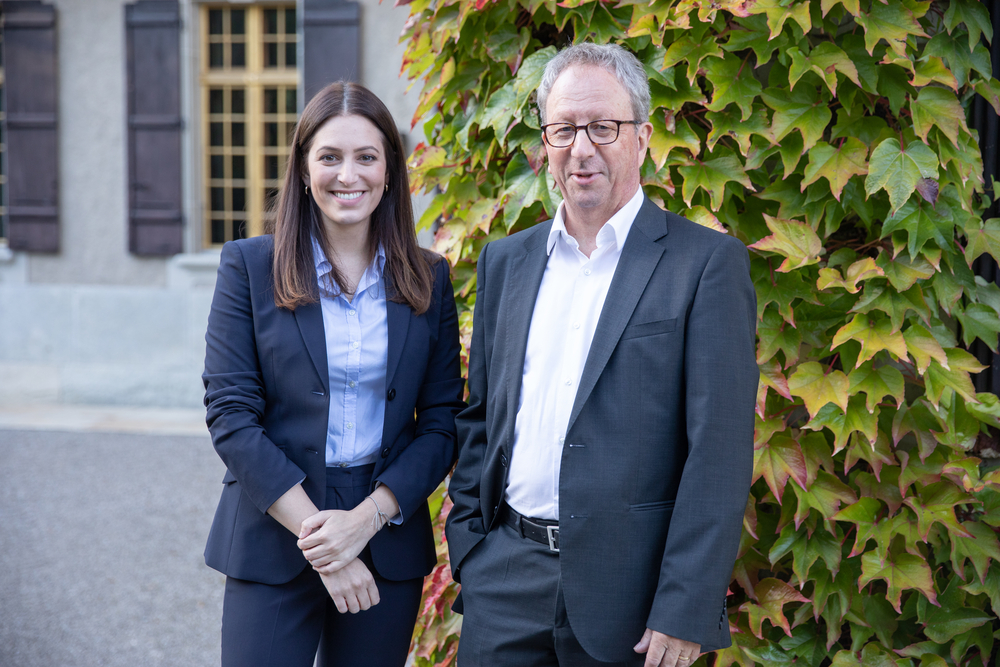Few of us think about the long and complex supply chains our lunches and dinners traverse before reaching our plates.
It may be hard to believe, but the global food and agriculture system is not guaranteed to last forever.
All stakeholders need to do their part to make it more resilient. That’s why we’ve invested in several food startups—including gene innovators Tropic Biosciences alternative protein pioneers Meeat, Imagindairy and Future Meat—and why we’re excited to see so much activity in the sustainable food space.
In the first section of a two-part interview, Emerald’s food gurus Philipp Hasler and Annina Winkler tell us their definitions of sustainability when it comes to food, where the biggest weak spots are and whether the entire system is at risk of collapse.
What exactly do we mean when we say “sustainable food”?
Annina: There are basically three aspects of sustainability: social, environmental and economic. To me, “sustainable food” is food production which can persist in a future with a lot more people and potentially harsher climatic conditions. So taking into consideration how the world will change in the future, under those three aspects, and making food production feasible under those conditions.
Philipp: The way food is being produced has to change, particularly with respect to climate change and carbon emissions. That to me is a must for sustainability. We can look at this from the perspective of agricultural practices, processing, distribution—thinking about the question of where food is produced, for instance. Does it make sense to grow quinoa in Peru and ship it to San Francisco or London? But the overarching challenge in sustainability is that we have to reduce the carbon footprint of how food is being produced and consumed today.
Sustainability also means that food has to be sustainable for the people involved in the supply chain. Looking at the farmers, for instance—they are largely excluded from the economic equation. They’re basically producing at marginal profits, the majority of which are made somewhere else. That, in my view, is not sustainable.
Looking at our current food system, what are the least sustainable aspects?
Annina: If we continue producing food as we do today, with all the stresses we are putting on the planet, with increasing populations and climate change, we’re just not going to have enough to go around. It will lead to a lot of damage. One could definitely make the case that animal or livestock farming is the most unsustainable part, though it’s not the only one.
Philipp: The current food system is extremely efficient, but this often comes at the cost of sustainability. I agree that our current methods of meat production are clearly not sustainable, but you can also look at rice production, which also emits a lot of methane, a major contributor to global warming. Land use is another area: the pressure to add more productive land causes deforestation. The way we farm, all the chemicals we use, decreases soil fertility, a problem that climate change is exacerbating further. Water, too, is not an inexhaustible resource and we are drawing it down way too quickly.
All this means that “efficiency” in the global food system must not only focus on yields, processing and supply chain, but has to take a longer-term vision of food production. We have to swing the pendulum more toward sustainability and away from immediate efficiency. We cannot buy another corn belt, Amazon rainforest or Atlantic Ocean.
Annina: The chemicals example is a good one; fertilizers and pesticides increase yields in the short-term but damage the soil’s long-term productive capacity. We see some digital solutions coming up that are helping growers use fewer chemicals in a more precise, targeted way. This can help us limit these harmful inputs.
We hear the word “collapse” quite a bit in food equity circles—both historically, with warnings of shortages that ultimately never came to pass, and more recently with inflation and concerns around the Ukraine invasion. Do you think the food system is at risk of collapse?
Philipp: Collapse to me means something irreversible. Take what we’re seeing with insect populations—it does appear there’s something really alarming going on with declines in key pollinating species. Here, a collapse would be a huge blow to the entire ecosystem. It is hard to say whether what we are experiencing is a collapse, per se, because nature can be so unpredictable—it may not really feel like a collapse right now, but I do think people need to be concerned that we are clearly moving in the wrong direction.
Annina: I think the pandemic was a good example of the fact that the whole global food supply chain is not as stable as we may have thought. Not a lot is needed to make it break down in one way or another. At the same time, I wouldn’t say that the whole food system is collapsing, because we are steadily developing new technologies, new solutions to help it stay afloat. On a small scale, we are seeing localized disruptions, which to me is a warning that if we don’t implement new technologies and new strategies and ways of producing, trading and so on, then we are headed for trouble.
Philipp: I think the word “collapse” creates too much fear and angst—I’d rather highlight the opportunities of making our system more sustainable. Milk, for example, can be made in a much more sustainable way by using plant-based substitutes produced in fermenters, and we can do the same for meat. If we make more land available for plant-based foods rather than raising animals, we can feed more people using less—and less harmful—inputs. I really don’t know if there’s a way to make the entire food system totally sustainable forever, but at least we can take steps to significantly reduce the possibility of collapse.
